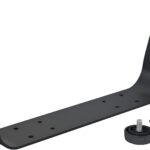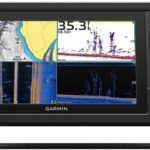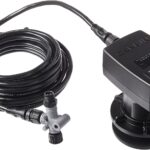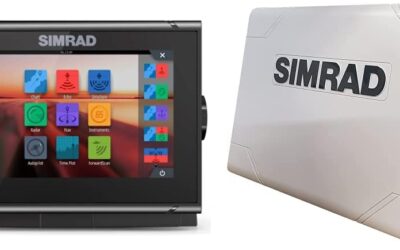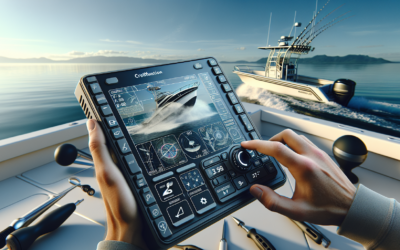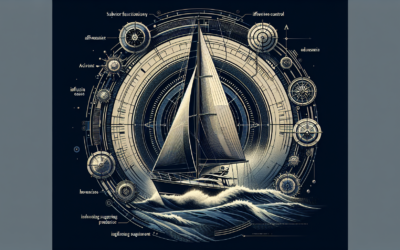Are you an avid angler looking to upgrade your fishing equipment? Look no further than the latest article on fish finders! “Key Features Of Modern Fish Finders: From Basics To Advanced Technologies” is a comprehensive guide that provides an overview of the essential features found in today’s cutting-edge fish finders. Whether you’re a beginner or a seasoned pro, this article will take you on a journey, starting from the basics and leading you towards the advanced technologies that can drastically improve your fishing game. Get ready to enhance your fishing experience like never before!
Sonar Technology
Single Frequency Sonar
When it comes to fish finders, sonar technology plays a vital role in helping you locate and identify fish beneath the water’s surface. One of the most common types of sonar technology found in fish finders is single frequency sonar. This technology uses a single frequency to send sound waves into the water and measure the time it takes for them to bounce back. By analyzing these echoes, the fish finder is able to create a detailed image of what lies beneath the surface.
Single frequency sonar is an excellent choice for beginners or those on a budget. It provides a clear and accurate view of the underwater environment, allowing you to easily identify fish and other underwater structures. However, it may have limitations when it comes to depth penetration and target separation in certain scenarios.
Dual Frequency Sonar
If you’re looking for more advanced capabilities in your fish finder, then dual frequency sonar is worth considering. As the name suggests, this technology uses two different frequencies to send sound waves into the water. The benefit of using multiple frequencies is that it allows for better depth penetration and target separation.
Dual frequency sonar provides a more detailed and comprehensive view of the underwater environment. It enhances your ability to distinguish between fish and other underwater structures, such as rocks or vegetation. This technology is particularly useful in deep waters or when fishing in challenging conditions.
Multiple Frequency Sonar
For the utmost versatility and accuracy, multiple frequency sonar is the way to go. This advanced sonar technology utilizes a broader range of frequencies to provide an even more detailed view of what lies beneath the water’s surface. By combining the strengths of different frequencies, multiple frequency sonar offers unparalleled target separation, depth penetration, and resolution.
With multiple frequency sonar, you can expect precise and reliable imaging, making it easier than ever to locate and track fish. This technology is particularly beneficial when fishing in varying water conditions or when searching for specific types of fish that may be hiding among other underwater structures.
Display Options
Color Display
Gone are the days of black and white fish finders. The advent of modern technology has brought about color displays in fish finders, which significantly enhance the user experience. With vibrant, high-resolution color displays, you can easily differentiate between different underwater structures and more accurately identify fish species.
Color displays provide a more realistic representation of the underwater environment, making it easier for you to interpret the information provided by your fish finder. Whether you’re targeting a specific species or simply exploring new fishing grounds, a color display will undoubtedly make your fishing trips more enjoyable and productive.
High-Resolution Screens
When it comes to fish finders, the quality of the screen is crucial in ensuring a clear and detailed view of the underwater world. High-resolution screens offer superior image quality, allowing you to see even the smallest details with exceptional clarity. This means that you can accurately identify fish, track their movement, and avoid potential obstacles.
With high-resolution screens, you won’t have to strain your eyes to decipher the information displayed on your fish finder. The sharp and vibrant images provided by these screens make fishing more efficient and enjoyable, giving you the confidence to explore new fishing spots and make the most of your time on the water.
Split-Screen Displays
Fish finders with split-screen displays provide a valuable advantage by allowing you to view multiple features simultaneously. This feature is particularly useful when you want to track fish movement while also keeping an eye on your navigational charts or other important data.
Split-screen displays allow you to customize your view, providing a convenient way to multitask while on the water. Whether you’re planning a route, monitoring water depth, or searching for hidden hotspots, having the ability to view multiple screens at once ensures that you can maximize your fishing experience and make informed decisions in real-time.
GPS Integration
Built-in GPS
One of the most significant advancements in fish finders is the integration of GPS technology. Built-in GPS capabilities allow you to navigate with confidence, ensuring that you can easily return to your favorite fishing spots or explore new ones with ease.
With built-in GPS, you can mark and save waypoints, record tracks, and plan routes directly on your fish finder. This provides invaluable assistance in staying on course, avoiding hazards, and finding productive fishing areas. Additionally, built-in GPS facilitates precise positioning, ensuring that you can accurately interpret the information displayed on your fish finder.
Mapping Capabilities
In conjunction with built-in GPS, fish finders with mapping capabilities offer a comprehensive navigational tool. These fish finders come pre-loaded with detailed mapping software, providing you with a wealth of information about the waterways you’re exploring.
Mapping capabilities allow you to view and navigate with depth contours, identify potential fishing hotspots, and locate underwater structures that attract fish. Whether you’re targeting specific species or simply looking for a new adventure, having access to detailed maps on your fish finder ensures that you have all the information you need to make the most of your fishing trips.
Waypoint Marking
In addition to built-in GPS and mapping capabilities, fish finders offer the convenient feature of waypoint marking. Waypoints are virtual markers that you can place on the map to mark locations of interest, such as fishing spots, boat ramps, or hidden hazards.
By marking waypoints on your fish finder, you can easily revisit successful fishing spots or avoid areas with known obstacles. Waypoint marking simplifies navigation and ensures that you can spend more time fishing and less time searching for the perfect spot. It’s a practical and efficient tool that maximizes your fishing experience and enhances your overall success on the water.
Chartplotter Functionality
Navigational Charts
Fish finders with chartplotter functionality provide an all-in-one solution for both navigating and locating fish. These advanced devices offer comprehensive navigational charts, providing you with detailed information about water depth, bottom contour, and potential hazards.
Navigational charts on fish finders allow you to plan your route, avoid underwater obstacles, and stay on course. With accurate and up-to-date charts, you can confidently explore new fishing grounds and make informed decisions on the water.
Route Planning
Planning your route before setting out on the water is essential for a successful and safe fishing trip. Fish finders with route planning capabilities enable you to plan and save your desired route directly on the device.
By plotting your route on the fish finder, you can easily follow navigational cues, avoid shallow areas, and streamline your journey. Route planning simplifies navigation, eliminates guesswork, and ensures that you reach your fishing destinations quickly and efficiently.
Trackback Feature
The trackback feature on fish finders allows you to review your sonar history and retrace your steps. This is particularly useful when you come across a productive fishing spot and want to analyze the underwater environment more closely.
By utilizing the trackback feature, you can go back to the areas where fish were detected, study the underwater structures, and make informed decisions about your fishing strategy. This feature enhances your ability to understand fish behavior and significantly increases your chances of success on future fishing trips.
Real-Time Data
Depth Readings
Knowing the depth of the water you’re fishing in is crucial in determining the appropriate techniques and equipment to use. Fish finders provide real-time depth readings, giving you valuable insight into the underwater environment.
Accurate depth readings allow you to identify depth changes, underwater drop-offs, or areas with potential fish activity. Whether you’re trolling, casting, or jigging, having access to real-time depth data ensures that you can effectively target fish at the optimal depth, increasing your chances of a successful catch.
Water Temperature
Water temperature is an important factor that influences fish behavior and their preferred habitats. Fish finders equipped with temperature sensors provide real-time water temperature readings, allowing you to determine the best areas to find fish.
By monitoring water temperature, you can identify thermoclines, where the water temperature changes abruptly. These areas often attract fish and can be a hotspot for successful fishing. Real-time temperature data helps you make informed decisions about where and how to fish, maximizing your chances of a fruitful day on the water.
Bottom Structure
Understanding the composition of the lake or river bottom can significantly improve your chances of finding and catching fish. Fish finders provide real-time information about the bottom structure, allowing you to identify sandy areas, rocky outcrops, or submerged vegetation.
By analyzing the bottom structure, you can locate areas where fish are likely to congregate or find cover. This knowledge helps you adapt your fishing techniques and select the appropriate lures or bait to target specific species. Real-time bottom structure data enhances your efficiency as an angler and provides you with a competitive edge on the water.
Fish Targeting
Fish ID
Fish identification is a valuable feature found in many modern fish finders. By utilizing advanced algorithms and pattern recognition, fish finders with fish ID capabilities can automatically differentiate between different types of fish.
With fish ID, you can easily distinguish between predators and baitfish, as well as identify specific fish species. This feature simplifies the interpretation of sonar readings, allowing you to focus on areas that are likely to hold the fish you’re targeting. Fish ID is particularly useful for beginners or anglers who want a more intuitive fishing experience.
Fish Arches
Fish arches are a common visual representation of fish on fish finders. They appear as curved lines on the screen, indicating the presence of fish in the water column. Fish arches are created when fish swim through the sonar cone, causing the sound waves to bounce back and create a distinct shape.
Fish arches provide a reliable indication of fish activity and location. By studying the size and shape of the arches, you can estimate the size and behavior of the fish. This information helps you fine-tune your fishing techniques and increase your chances of a successful catch.
Fish Alarms
Fish alarms are a useful feature that alerts you when fish are detected within a specified range. By setting a certain depth or distance threshold, you can configure your fish finder to emit an audible or visual signal when fish are present.
Fish alarms allow you to focus on other aspects of fishing, such as navigating or preparing your gear, while still being notified when fish are nearby. This feature saves you valuable time and ensures that you never miss an opportunity to target fish, even when you’re not actively monitoring the fish finder screen.
Advanced Imaging
Down Imaging
Down imaging technology revolutionizes the way you see what’s beneath the water’s surface. By using a high-frequency transducer, down imaging sonar technology provides detailed images of the underwater environment directly beneath your boat.
Down imaging enhances your ability to distinguish between fish and other underwater structures, such as rocks, logs, or sunken debris. The clear and detailed images allow you to identify fish-holding areas and make accurate assessments of their behavior and size. Down imaging technology is particularly advantageous in shallow water or when fishing in heavily vegetated areas.
Side Imaging
Side imaging takes fish finding technology to a whole new level by providing detailed images of the underwater environment to the sides of your boat. This technology utilizes advanced transducers to emit sound waves at wide angles, allowing for the creation of comprehensive side-view maps.
Side imaging offers unparalleled visibility, allowing you to locate fish, underwater structures, and changes in the bottom composition. By analyzing the side imaging data, you can gain valuable insights into fish behavior and identify hidden hotspots that may not be visible with other types of sonar technology. Side imaging is especially useful for anglers looking to explore new fishing grounds or those who want to maximize their efficiency on the water.
Real-Time 3D Imaging
Real-time 3D imaging is the pinnacle of fish finder technology, providing you with the most realistic and comprehensive view of the underwater world. This advanced imaging technology combines the benefits of down imaging and side imaging to create a three-dimensional representation of what lies beneath the water’s surface.
Real-time 3D imaging allows you to visualize fish, underwater structures, and the bottom contour in stunning detail. The three-dimensional perspective provides a more immersive fishing experience, empowering you to make accurate judgments about fish behavior and habitat. Real-time 3D imaging is the ultimate tool for anglers who want to take their fishing adventures to new heights.
Connectivity Options
Wireless Connectivity
Wireless connectivity is a feature that allows you to connect your fish finder to other devices, such as smartphones or tablets, without the need for cables. This wireless connection provides convenient access to additional features and functions, enhancing the overall usability of your fish finder.
With wireless connectivity, you can view and control your fish finder directly from your mobile device, making it easier than ever to monitor the underwater environment. Additionally, you can transfer waypoints, routes, or other data between your fish finder and other devices, ensuring seamless integration and enhanced fishing efficiency.
Mobile App Integration
Mobile app integration takes connectivity to the next level by providing access to a wide range of fishing-related apps directly from your fish finder. Through app integration, you can access weather forecasts, tidal information, or even log your fishing trips for future reference.
By utilizing fishing apps, you can stay up-to-date with the latest fishing reports, trends, and techniques. Mobile app integration brings a wealth of information to your fingertips, allowing you to make informed decisions and increase your chances of success on the water.
Social Sharing
With the rise of social media, anglers can now share their fishing experiences and successes with friends, family, and the wider fishing community. Fish finders with social sharing capabilities enable you to share photos, videos, or other fishing-related content directly from the device.
Social sharing allows you to showcase your catches, exchange tips and advice, or simply connect with fellow anglers who share your passion. This feature adds a social element to your fishing trips, enhancing the overall enjoyment and creating a sense of community within the fishing world.
Transducer Types
Traditional Transducers
Traditional transducers are the most common type of transducer found in fish finders. They operate by emitting sound waves at a single frequency and are suitable for general fishing applications.
Traditional transducers provide reliable sonar readings and are cost-effective options for beginners or casual anglers. They offer a good balance between price and performance, making them a popular choice for a wide range of fishing enthusiasts.
Chirp Transducers
Chirp transducers represent the next evolution in sonar technology, offering enhanced depth penetration, target separation, and clarity. Unlike traditional transducers that emit sound waves at a single frequency, chirp transducers emit a continuous range of frequencies.
This continuous frequency sweep provides more detailed and accurate sonar readings. Chirp transducers allow you to see fish, underwater structures, and the bottom contour with unparalleled clarity and resolution. They excel in deep-water fishing and when targeting species that reside in challenging underwater environments.
StructureScan Transducers
StructureScan transducers are designed specifically for those anglers who want a more comprehensive view of the underwater world. These transducers utilize side imaging technology to create detailed images of the underwater environment to the sides of your boat.
StructureScan transducers excel at revealing hidden hotspots, pinpointing fish-holding areas, and identifying changes in the bottom composition. With the ability to see what lies outside the sonar cone, you can cover a larger area in less time and increase your chances of locating and catching fish.
Mounting Options
Fixed Mount
Fixed mount fish finders are permanently installed on your boat and provide a clean and secure mounting solution. They offer the advantage of being always ready for use, ensuring that your fish finder is in place and functioning whenever you hit the water.
Fixed mount fish finders are typically mounted on the console or bow of the boat, providing easy access and optimal visibility. They offer a robust and durable solution, suitable for anglers who regularly fish from the same boat and want a permanent fish-finding solution.
Portable Mount
Portable mount fish finders are designed for anglers who need flexibility and versatility in their fishing setups. These fish finders can be easily moved between different boats or locations, making them an excellent choice for those who frequently fish from various vessels or want to use the fish finder in multiple settings.
Portable mount fish finders come with a variety of mounting options, such as suction cups, clamps, or brackets, allowing you to attach the device to different surfaces. They are lightweight, compact, and easy to transport, providing you with a portable fish-finding solution that adapts to your fishing needs.
Trolling Motor Mount
Trolling motor mount fish finders offer a unique mounting solution that maximizes efficiency and convenience. These fish finders are specifically designed to be attached to the shaft or head of the trolling motor, providing you with a clear and unobstructed view of the underwater world.
By mounting the fish finder on the trolling motor, you can easily follow the fish, maintain a consistent depth, and navigate with precision. Trolling motor mount fish finders save you valuable time and effort by integrating seamlessly with your trolling motor setup, ensuring that you can focus on fishing without any distractions.
In conclusion, modern fish finders offer a wide range of features and technologies that enhance your fishing experience and increase your chances of success on the water. From sonar technology and display options to GPS integration and advanced imaging, these key features provide invaluable assistance in locating fish and navigating waterways. Choose a fish finder that aligns with your fishing needs and preferences, and get ready to take your angling adventures to new depths. Happy fishing!

